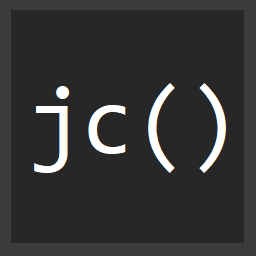Using jQuery's $.ajax in an Angular app
We've all been using jQuery for a long time. It's for this reason that Angular.js works seemlessly with jQuery if it sees it on the page, but also has it's on jQLite available for those who decide to opt out of jQuery.
One of the APIs in jQuery that I find myself using the most is $.ajax.
Now I know that Angular has it's own $http service that works great, but I was thinking the other day how I sometimes wish I could just use jQuery's $.ajax instead.
There's a couple of reasons for this, one is that I already know the API. I have to google $http every now and then to make sure I'm using it right.
Another reason is I really like to use jQuery Mockjax. It's a very simple way to mock HTTP requests without having to tap into the $httpBackend of Angular.
I decided to throw together a small Angular service that utilizes jQuery's $.ajax for use in services and controllers...
(function($) {
function Ajax($rootScope, $dfd) {
var ajax = jQuery.ajax;
return function(options) {
var promise = ajax(options),
dfd = $dfd();
promise.done(function(data) {
$rootScope.$apply(function() {
dfd.resolve(data);
});
}).fail(function() {
var failArgs = arguments;
$rootScope.$apply(function() {
dfd.reject.apply(dfd, failArgs);
});
});
return dfd.promise();
};
}
Ajax.$inject = ['$rootScope', '$dfd'];
angular.module("Ajax")
.provider("$ajax", function() {
this.defaults = {};
this.setOptions = function() {
$.ajaxSetup(this.defaults = options);
};
this.getOptions = function() {
return this.defaults;
};
this.$get = Ajax;
});
}(jQuery));
(function($) {
function Dfd() {
return function() {
return jQuery.Deferred();
};
}
angular.module("Ajax")
.factory("$dfd", Dfd);
}(jQuery));
So, there's a few pieces here. First of all is the Ajax function. This function's job is to return the API for the new $ajax services we're creating.
The first thing it does is grab a reference to jQuery.ajax and then returns a function.
We're then immediately invoking ajax in that function and getting it's promise back. Next we're using the $dfd service which is defined down farther in the code, but essentially just creates a new jQuery promise.
We're then callin the .done method on the Ajax promise and passing a function. $rootScope is injected into the service so when the Ajax promise is resolved we're able to call $rootScope.$apply() to ensure that the data returned is used within the angular exectution context.
We then resolve the promise we created with $dfd().
There is also a .fail which also calls $rootScope.$apply in case something goes wrong when making the request.
At the end of the service we simply return the dfd.promise().
This service is actually defined as a provider and the reason for this is whatever returns from $get in the provider becomes the API for the service, but this also gives us a place to configure the service.
There are setOptions and getOptions functions that allow you to conigure the $.ajax defaults with jQuery's $.ajaxSetup method.
angular.module('Foo',).config(function($ajaxProvider) {
$ajaxProvider.setConfig({ /* .. */ });
});
The way you actually utilize this new service in a controller would look like...
angular.module("Ajax", [])
.controller("WeatherCtrl", function($ajax, $scope) {
$ajax({
url: "http://api.openweathermap.org/data/2.5/weather?q=London,uk",
dataType: "JSONP"
}).done(function(weather) {
$scope.weather = weather;
});
});
Here is the example running in a Plnkr...
It's very easy to utilize the well known $.ajax API from jQuery with this service.
